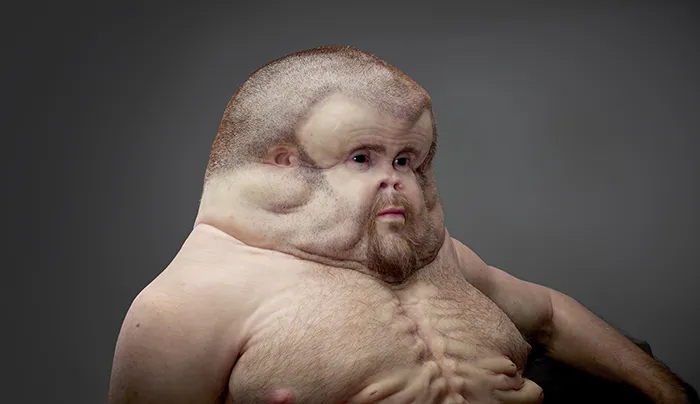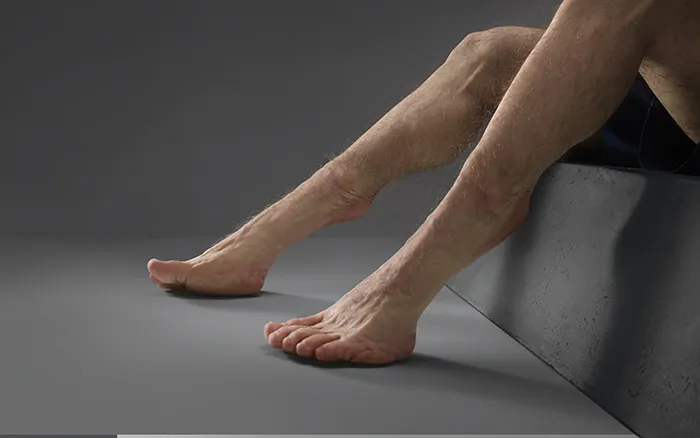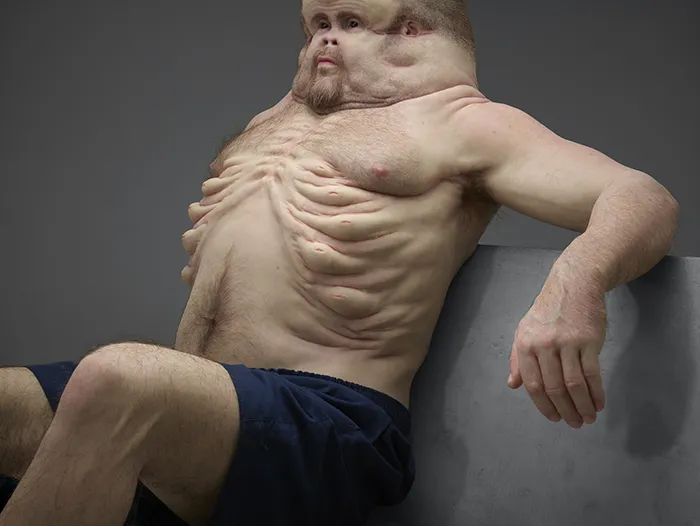Horrifying Sculpture Depicts a Human Evolved to Survive a Car Crash
Once you’ve seen it, you can’t unsee it
Since the car was first invented, advancements in technology and updated standards have made them increasingly safer. But even with greater precautions, the frail human body often can't survive a crash. And the death toll is high. Recently, the Transport Accident Commission of Victoria, Australia commissioned a sculpture based on what a human who has naturally evolved to survive a car crash might look like—and the result is, to put it lightly, horrifying.
Nicknamed “Graham,” the sculpture was designed by Melbourne-based artist Patricia Piccinini. With help from Christian Kenfield, a trauma surgeon at Royal Melbourne hospital, and David Logan, a crash investigator at Monash University’s accident research center, the group set out to design a human who had evolved the defenses necessary to survive a high-speed collision, Elle Hunt reports for The Guardian.
“The truth is that cars have evolved a lot faster than we have,” Logan says in a video documenting Graham’s design. “Our bodies are just not equipped to handle the forces in common crashes.”
Seatbelts and airbags might lower the risk of serious injury in a car crash, but that doesn’t mean much for fragile, fleshy people when they are struck by a speeding car. So to design a human who may have evolved to survive a car crash, the collaborators had to take physics and biology into account, Matt Novak writes for Gizmodo. And it all starts with the head.
“The most significant part of the body for injury is the head,” Kenfield says in the video. “As the head stops, the brain actually keeps heading forwards, smashing against the front part of the skull and then bouncing backwards and getting an injury on the back of the head as well.”
To defend against these forces, Piccinini gave Graham a massive, reinforced skull that folds over the front to protect against brain trauma. Because the neck is another vulnerable part of the human body during a car crash, she declined to give him one, fusing Graham’s head with his torso and insulating it with folds of fat, Hunt reports. In addition to a tougher head, the group decided Graham needed more protection around his lungs and organs, padding him with natural airbags between each rib and beneath a set of 10 extra nipples. Graham’s knees also bend in every direction, to prevent them from snapping if caught in a crash.
“People can survive running at full pace into a wall but when you’re talking about collisions involving vehicles, the speeds are faster, the forces are greater and the chances of survival are much slimmer,” Joe Calafiore, the chief executive officer of the Transport Accident Commission says in a statement.
For the next few weeks, Graham will be on display at the State Library of Victoria. After August 8, the sculpture will go on tour in an effort to educate people about the importance of road safety. For those unlucky enough to miss seeing Graham in person, a new website gives visitors a 360-degree-view of the monstrosity as well as more information on how he was designed.
“Graham is an educational tool that will serve the community for years to come as a reminder of why we need to develop a safer road system that will protect us when things go wrong,” Calafiore said in a statement.




